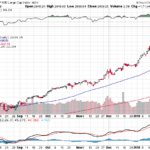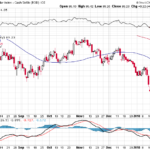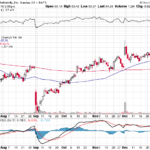Ray Dalio is the head of Bridgewater Associates, LP, the world’s largest hedge fund with about $150 Billion under management, according to its website. I think it is very interesting to read and to learn about Mr. Dalio’s ideas and think about how they might apply to your life.
Principles
Mr. Dalio has written a new book, titled “Principles”. As he is the head of the largest hedge fund, one would think that “Principles” is about how to find the best investments. It is not. “Principals” is about how to build and properly operate the best organization according to his main goal, the quest for Truth in all things, and his means of achieving the Truth, which he calls Radical Transparency. Think about it: What if, all day, every day, your whole purpose to everything you do is to seek the truth? How would you change what you do? How would you work with others? Could you look at yourself in the mirror every night after having worked in your current job and believe that you have successfully sought the Truth? It’s a very different way of thinking about your job, even if you aren’t the boss of a big company. You would have to be fully trusting of everyone you work with. That’s what Radical Transparency is all about: No coffee break gossip; no holding back information from other employees in an effort to gain an edge over them; and really no place for office politics. Tell everything to everyone’s face. Be blunt to everyone. Would you like to work in a place like that? Or not?
I have not read “Principles”, but there is a PDF of Mr. Dalio’s ideas, circa 2011, that summarize the most important 210 points (that’s right, 210) of his ideas. Perhaps they have been refined since then, and likely Mr. Dalio has embellished the 210 points with some good stories, but if you don’t want to buy the book, you can get a flavor of it through this link:
https://inside.bwater.com/publications/principles_excerpt
Economic Machine
Four years ago, Mr. Dalio posted a 30-minute animated video titled “How the Economic Machine Works”. You can find it on YouTube and I highly recommend it. As the title suggests, the video is big-picture focused. Most specifically, it is focused on how governments have printed money and gone into massive debt over the years, and the macroeconomic ramifications thereof. Mr. Dalio believes that history repeats itself and that massive money printing and government indebtedness does not end well. The video moves quickly and the animation is very clever. Go to YouTube and search for Ray Dalio.
All Seasons Strategy
Bridgewater’s asset allocation strategy is their own Secret Sauce. Luckily, Tony Robbins, in his book “Money: Master the Game”, interviewed Mr. Dalio and got a basic idea of how Bridgewater allocates its assets. A summary of Robbins’ interview and the asset allocation strategy, which Dalio calls the All Seasons Strategy, is through this link:
https://www.tonyrobbins.com/wealth-lifestyle/the-end-of-the-bull-market/
The All Seasons Strategy is predicated on containing risk. Stocks are much riskier than bonds, meaning their returns fluctuate and are not consistent over time. Therefore, according to Dalio, an investor should not put all of their money into stocks. Dalio also sees other asset classes, including gold and other commodities, as natural hedges against stock risk. The following is a summary of the All Seasons Strategy:
- 30% Stocks
- 40% Long-Term US Bonds
- 15% Intermediate US Bonds
- 7.5% Gold
- 7.5% Other Commodities
As its name implies, the All Seasons Strategy is a long-term hold strategy that should do well during all economic cycles. If you think about it, the 5 asset classes represent more or less the largest economic classes of the US economy. If one sector is underperforming, it probably means that another is outperforming. As the whole US economy moves forward, so should this All Seasons Strategy which mimics the broadest sectors of the US economy. This is the type of portfolio that, once established, you might look at once or twice per year to see if it needs reallocation. Kind of an autopilot strategy. Does it work? I have backtested a version of it, using ETF’s as proxies for the various sectors. While my backtested returns didn’t match those of Bridgewater, they were positive, even during down markets. There are other articles linked in Google that find similar results.
IMO
My main takeaway is a glimpse into the way Ray Dalio thinks about risk, how to limit it, and invest while being cognizant about risk. He does view portfolio risk differently than do most investors. As to his Principles and his non-stop quest for truth: While it is admirable, I don’t view my mission the same way. I view my mission as helping my clients achieve their dreams through their financial success. I also think it is important for most people to have some sense of privacy, and the Radical Transparency concept of Dalio doesn’t allow for much personal privacy. One can be truthful and still maintain privacy. Nevertheless, Ray Dalio and his writings and his video are thought-provoking, especially coming, as they do, from the manager of the world’s largest hedge fund.




